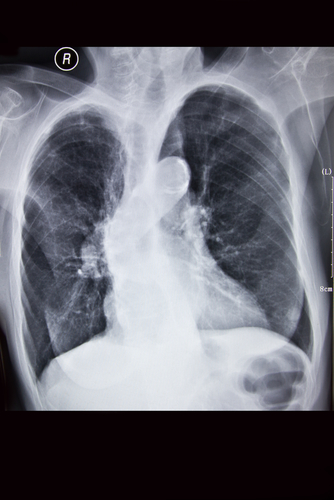An international group of researchers led by Aleksander Edelman from Institut Fédératif de Recherche Necker-Enfants Malades (CNRS/Inserm/Université Paris Descartes) discovered two novel compounds that can target the genetic mutation that leads to a severe form of Cystic Fibrosis. The study entitled ”Discovery of novel potent DF508 ‐CFTRcorrectors that target the nucleotidebinding domain” was published in EMBO Molecular Medicine.
Cystic Fibrosis (CF) is a fatal autosomal recessive genetic disorder caused by loss‐of‐function mutations in the CFTR gene that encodes the CFTR protein (CF transmembrane conductance regulator). The CFTR protein is an ion channel that enables the passage of chloride ions through cell membranes. The most frequent mutation in the CFTR gene, 70% of cases, is the loss of phenylalanine 508 in NBD1 domain (DF508‐CFTR), which is responsible for a severe form of CF. This disease affects the epithelia of several tissues, mainly the lungs, leading to excess mucus in the bronchi, pancreas and intestine. In the lungs, the mucus retains pathogenic agents and promotes the development of chronic infections and inflammatory conditions that in the end could be fatal.
The research team performed virtual screening and experiments on mice and human cells in culture and detected 200,000 compounds, among which two specific compounds that interacted with the mutated region of the protein and promoted its expression and function. The two selected drugs permitted the mutated ΔF508-CFTR protein to be transported to the membrane and perform its function.
[adrotate group=”9″]
The most important findings revealed by this study were the mechanisms of action of these two compounds. Importantly, these compounds enable the mutated ΔF508-CFTR protein to perform normal function. When the mutated ΔF508-CFTR protein is synthesized, it is recognized by keratin 8, a protein involved in the degradation of abnormal protein, and prevented from moving to the cell membrane. These compounds block the interaction between keratin 8 and ΔF508-CFTR so that the protein can exert is function as an ion channel.
The researchers believe that these the two compounds can work together with “potentiating” compounds to increase the activity of ΔF508-CFTR. Next, the research team will evaluate the potential of these compounds to reduce the susceptibility to infection of cystic fibrosis mice models. In the future, they plan to perform clinical trials in cystic fibrosis patients.

